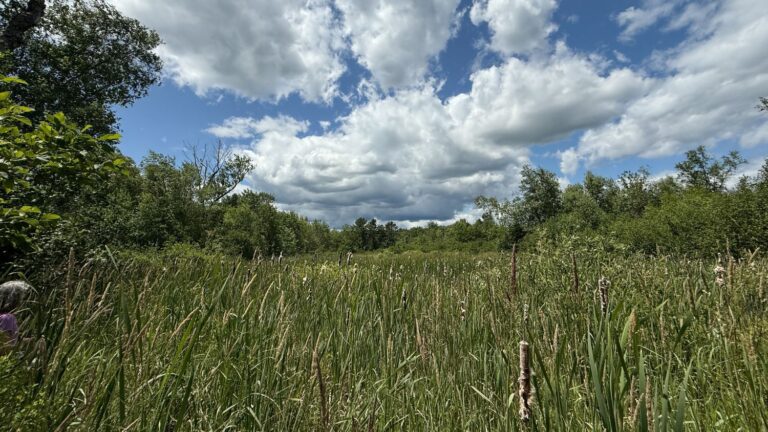Editor’s Note: The following story first appeared in The Maine Monitor’s free environmental newsletter, Climate Monitor, that is delivered to inboxes every Friday morning. Sign up for the free newsletter to get important environmental news by registering at this link.
Maine has long been one of the top users of wood heat in the country. Cozying up beside a warm, glowing wood stove is a quintessential part of winter in many homes. Northern New Englanders pride themselves on their towering wood piles each season. And other fuels derived from Maine timber, like pellets and biofuels, are big business — potentially increasingly so, as the state looks to move off more severely planet-warming fossil fuels like heating oil.
But wood heat can have its own drawbacks. Besides carbon, its harmful emissions include fine particulate matter, known as PM2.5 (that’s a number of microns in size, 20+ times smaller than the thickness of a human hair). These tiny particles embed in the lungs when inhaled and can lead to deadly health risks like lung cancer and heart disease, especially for sensitive populations.
A new report from the U.S. Environmental Protection Agency’s independent Office of the Inspector General says federal regulators aren’t doing enough to ensure that household wood heaters comply with limits on these particulates.
“Certification tests may not be accurate, do not reflect real-world conditions, and may result in some wood heaters being certified for sale that emit too much particulate-matter pollution,” the report says.
The standards the EPA is supposed to be screening for date to 2015 under President Obama. When the rules were first developed, some wood heat-reliant states like Maine raised concerns that the change could raise costs and keep residents from replacing older, dirtier stoves. Then-Governor Paul LePage wrote an op-ed about it in The Wall Street Journal.
The EPA has tweaked its testing methods for PM2.5 from wood heaters in the years since. But in 2021, a nonprofit group of air quality agencies in Maine and other Northeast states worked with Alaska to find flaws in some newer methods, drawing similar conclusions to those in the OIG’s new report.
Jeff Crawford, Maine’s air quality bureau director, nodded to this in an emailed statement this week. “While we haven’t had a chance to thoroughly review the OIG Report, our understanding is that it confirms [the nonprofit’s 2021 findings,] substantiating concerns that the current certification program cannot be relied on to identify lower-emitting appliances,” he said.
Attorneys general from some states that participated in that report — though not Maine — asked the EPA in 2021 to scrap two testing methods that relied on cord wood. The agency did so early last year.
But the OIG says some stoves that were certified with these methods will remain for sale for at least a few more years. An independent lab tested seven kinds of those stoves and found they all exceeded federal standards for PM2.5, with higher emissions than were reported in their original certification tests.
Plus, wood heaters can run for decades. Stoves from before 2015 may be even further from current PM2.5 standards. And, the OIG says, millions in funding to replace older systems may be wasted on newer models with hidden dangers.
Efficiency Maine offers up to $6,000 in rebates for Maine residents to upgrade to certain high-efficiency systems that burn cord wood or pellets. And in Cumberland County, the American Lung Association will give vouchers to replace non-EPA-certified wood stoves from before the year 2000.
“But because of the issues with the EPA’s testing and certification process, we don’t know for sure that the newer units are actually cleaner,” said EPA OIG program analyst Chip Triebwasser in the office’s podcast about the report.
The watchdog recommends an overhaul of the agency’s wood heat program, including the creation of a new cord wood testing method.
EPA spokeswoman Shayla Powell said in an emailed statement that the agency is already working to improve many aspects of the program based on the 2021 report from the Northeast nonprofit. She added that Inflation Reduction Act funds will be used to gather more data on wood heat emissions such as PM2.5.
“Reducing particle pollution from wood burning devices is key to improving air quality in communities that use wood for heat,” Powell said.
Overall, Maine and New England are on a positive trend toward fewer unhealthy air quality days. Officials at the state Department of Environmental Protection said that in general, new EPA rules for PM2.5 have helped.
State data shows that Maine still sees a few dozen “moderate” PM2.5 days each year, and typically at least one or two days that are officially “unhealthy” — though none in 2022, per preliminary records.
Unhealthy emissions can concentrate in areas with dense populations, a lot of vehicle traffic or wood heaters running, or certain topography, like a valley. It requires certain weather conditions — cold, clear, calm winter days amid high-pressure systems for PM2.5, according to the DEP.
Wildfire smoke wafting from the Western U.S. can also exacerbate these problems. And these same principles apply to unhealthy ozone levels, or smog, on muggy summer days in Maine. Western wildfires and Northeastern humidity may both increase with climate change.
As for particulates, even when they don’t accumulate across wide areas, they can still pose risks in individual households. See some tips on ensuring your winter wood stove rituals are as safe and healthy as possible.
To read the full edition of this newsletter, see Climate Monitor: Watchdog says EPA falls short on wood heater oversight.
Reach Annie Ropeik with story ideas at: moc.l1752535425iamg@1752535425kiepo1752535425ra1752535425.








